
About Andrew Cusack
 Writer, web designer, etc.; born in New York; educated in Argentina, Scotland, and South Africa; now based in London.
Writer, web designer, etc.; born in New York; educated in Argentina, Scotland, and South Africa; now based in London. read more
News
Blogs
Reviews & Periodicals
Arts & Design
World
France
Mitteleuropa
Knickerbockers
Argentina
The Levant
Africa
Cape of Good Hope
Netherlands
Scandinavia
Québec
India
Muscovy
Germany
Academica
‘First of Britain’s Sons To Die’
Saint Alban, June 22
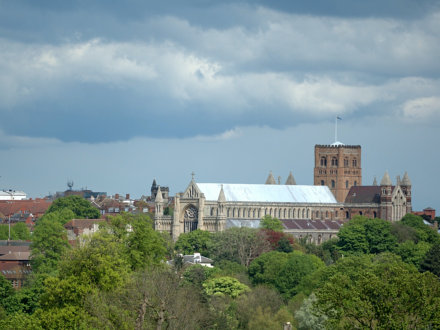
Sing triumphant o’er the foe;
Tell of him, a Martyr glorious,
For the changeless truth laid low;
Faithful servant, bright example,
Whom all lands and ages know.
Valiant soldier, noble Martyr,
First of Britain’s sons to die,
Pagan ire and cries withstanding,
By the grace of God Most High,
By the strength of Him, Protector
Who, in strength and power, was nigh.
Laud and honour to the Father,
Equal honour to the Son,
Adoration to the Spirit,
Ever Three and ever One,
Consubstantial, Co-eternal,
While unending ages run.
These were the words to the school hymn at St. Alban’s College down in Argentina, which I briefly had the privilege of attending and which is currently celebrating its centenary year (more on that in another post). It was down beneath the Southern Cross that I first became more closely acquainted with good Saint Alban, who was the first Christian martyr of Britain.
Alban was a pagan, and very likely a soldier too, in the settlement of Verulamium, the third largest municipium in Roman Britain and only some twenty-odd miles north of Londinium, the future capital of Britain. In the year 304, a persecution of Christians erupted in Verulamium and Alban granted a fleeing priest refuge in his house. Over the course of a few days, he received instruction from the priest and was baptised. When the governor sent men to arrest the priest, Alban disguised himself in the cleric’s cloak and gave himself up instead. He was brought before a judge and tortured but would not deny his faith and so was sentenced to die.
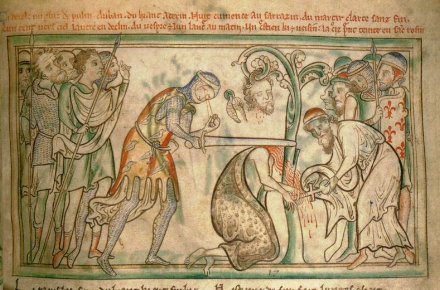
A mediæval depiction of the martyrdom of St. Alban.
En route to the hill of execution, it is said that Alban arrested the waters of a river so he could proceed to his martyrdom on dry earth. His executioner was converted on the sight of him, but a replacement was soon found and Alban was duly beheaded. His head rolled down the hill, and wherever his blood spilled, roses bloomed and where his head finally rested, a well sprang forth. His actual executioner, having struck the final blow, was struck himself with blindness.
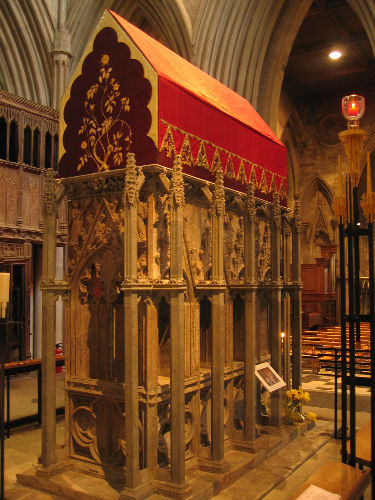
The restored shrine of Saint Alban.
As early as 580 he was venerated as far away as southern Gaul, where the Christian poet Venantius Honorius Clementianus Fortunatus commemorated him with the line “Albanum egregium fecunda Britannia profert” (“Fruitful Britain profers great Alban’s name“). Verulamium, the town in which he was martyred, is now known as St Albans for the great church erected there to his name. A shrine was first built on the site after the Emperor Constantine (whose mother, St. Helena, was British) issued the Edict of Milan. The Benedictine monastery is believed to have been founded in 793. The Norman structure which survives, much modified, today was begun by the 14th Abbot, Paul of Caen, who was appointed by the great reforming Archbishop of Canterbury, Lanfranc. It was the largest church in England at its completion and its great crossing tower is the only eleventh century example still extant.
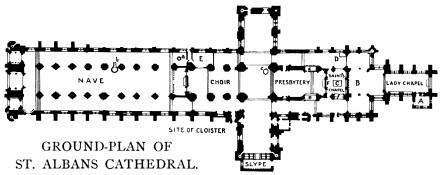
Nicholas Breakspear was born in St Albans and was rejected for entrance to the novitiate of the abbey. He was later accepted by a French abbey and ordained, being elected Pope Adrian IV in 1154, the only English pope. The monastery school had been founded by Abbot Wulsin in 948 and still operates today; one of the oldest schools in Great Britain. At the Dissolution of the Monasteries, the abbey was dissolved by Henry VIII and the great abbey church was ransacked and looted. It was neglected until 1553, when Edward VI sold it to the town for use as a parish church. In 1877, Parliament established the See of St Albans for the Church of England and the former abbey became a cathedral church.
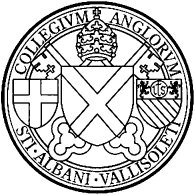 During the Reformation all Catholic seminaries in Britainwere shut or taken over for use as Anglican institutions. English, Irish, and Scottish seminaries were then founded on the Continent for the training of priests for their native lands. (The Irish College at Douai was founded by one Christopher Cusack, who became a priest after being widowed). Spain has a Scottish seminary at Salamanca and an English one at Valladolid, founded by the King of Spain. It is dedicated to our saint, and officially known as the Royal English College of Saint Alban at Valladolid (seal, right). The seal contains a shield featuring the St. Alban’s Cross, a yellow saltire on a blue field, with the Cross of St. George on the left and Jesuit arms on the right.
During the Reformation all Catholic seminaries in Britainwere shut or taken over for use as Anglican institutions. English, Irish, and Scottish seminaries were then founded on the Continent for the training of priests for their native lands. (The Irish College at Douai was founded by one Christopher Cusack, who became a priest after being widowed). Spain has a Scottish seminary at Salamanca and an English one at Valladolid, founded by the King of Spain. It is dedicated to our saint, and officially known as the Royal English College of Saint Alban at Valladolid (seal, right). The seal contains a shield featuring the St. Alban’s Cross, a yellow saltire on a blue field, with the Cross of St. George on the left and Jesuit arms on the right.
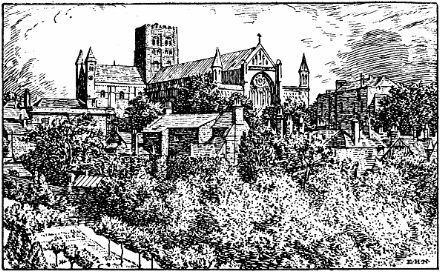
Aside from what was once Verulamium, there are towns named after St. Alban in Victoria, New South Wales, New Zealand, New York, Pennsylvania, Vermont, Maine, West Virginia, and elsewhere. There are churches dedicated to him throughout the English-speaking world and beyond. Schools bear his name in England, South Africa, Argentina, America, and New Zealand. Mount Saint Alban is the highest point in Washington, D.C. and is home to the National Cathedral, St. Alban’s School for Boys, the National Cathedral School for Girls, and St. Alban’s Parish Church (all Episcopalian).
Search
Instagram: @andcusack
Click here for my Instagram photos.Most Recent Posts
- Gellner’s Prague December 19, 2024
- Monsieur Bayrou December 18, 2024
- Dempsey Heiner, Art Critic December 17, 2024
- Vote AR December 16, 2024
- Articles of Note: 12 December 2024 December 12, 2024
Most Recent Comments
Book Wishlist
Monthly Archives
Categories



I was thinking about making a day trip to St Alban’s, which is about 15 miles from me, before heading back to Scotland.
Wow Andrew. Coming to this site is helping me re-learn my religion. Thanks so much.
Andrew, I’m a former student of St. Alban’s College in Argentina. St. Albans is a life-model for us.
Cheers
Andrew, St Alban’s College in Pretoria, South Africa has exactly the same School song as the College in Argentina.
St Alban’s College,Pretoria celebrates it’s 50th anniversary in 2013
I attended St. Alban’s Junior School in Holborn, London and we regularly sang the hymn (with one or two small differences) that you mention in your text. I’m 62 now but remember the hymn to this day.
I attend St Alban’s Church, Holborn, next to the school mentioned in the preceding post, and the hymn is sung regularly there at its patronal festival on or about the 20th June (tomorrow, this year). It’s usually called ‘Craggy Way’ after the tune, which alludes to words in one of the verses omitted in the version of the hymn given above. Whether under current restrictions it will be possible for it to be sung with the usual enthusiasm, we shall see!